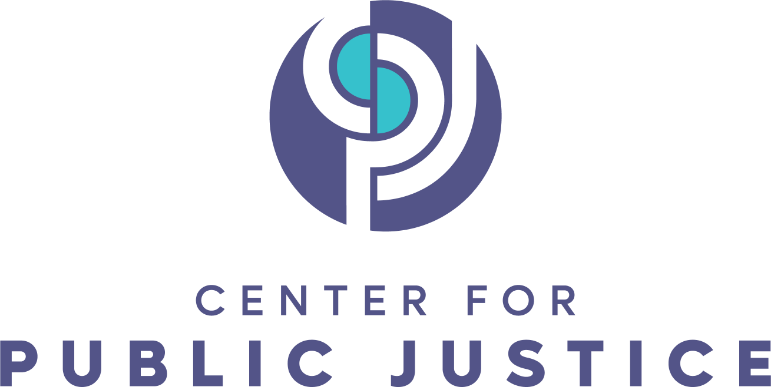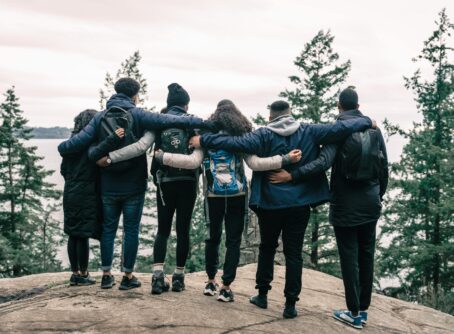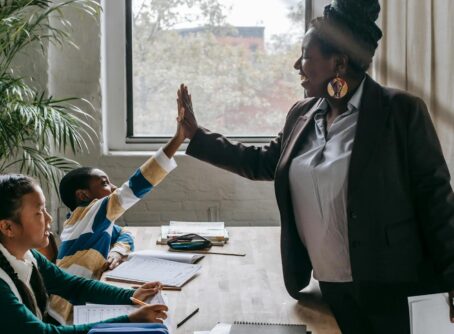
This interview is part of our series on human trafficking: understanding the complex problem of human trafficking as well as the roles that institutions and society have in stopping it.
EF: From your talk at Faith and Law, you had mentioned that the number of persons in trafficking has actually increased despite efforts to decrease them, and despite having more laws on the books to bring traffickers to justice. I was just hoping you could talk a little bit about why you think that is.
JOHN COTTON RICHMOND: We just received in September of this year [2022] the new global estimate of modern slavery from the International Labor Organization. This is the first time they’ve given us a new global estimate since May of 2017, so it’s been about five years. Their last estimate was 24.9 million victims in the world. Their estimate this September was 27.6 million victims in the world, including forced labor and sex trafficking. So, the number has gone up by a few million, certainly going in the wrong direction. You know, we’ve said for years that, “There are more victims today than ever before in human history: more today than trafficked during all 400 years of the transatlantic slave trade.” This highlights the urgency of the problem. Most scholars estimate about 12 million people were trafficked during the transatlantic slave trade over 400 years, and now we’ve got double that by any estimation in in the world today.
I think the International Labour Organization (ILO) number is the most conservative number out there, and honestly at this point, there’s no competitor number to it. The methodology can be criticized. I have my own questions about the methodology. But regardless of how you might tinker with it, the number is helpful in creating that sense of scope and urgency. This is a massive problem around the world that something needs to be done about.
I think what is challenging is that we’ve have this increased estimate of people in forced labor and sex trafficking despite our very ambitious Sustainable Development Goals from the UN. The estimate has increased despite all of the countries that have committed to the UN Protocol against Trafficking in Persons and despite all the national laws that have been passed around the world.
I really think the reason is that we don’t have a way to connect our intentions about justice to the need that exists today. That is, I don’t think we have public justice delivery systems in place where the protections of law — these words written on paper — can actually get to the people who need help the most. It’s not that we should say all the international instruments — all the treaties and laws — have been a waste of time. The opposite is true. Actually, we should celebrate it and cheer on the diplomats, the parliamentarians and the members of Congress that got all that done because it actually represents an incredible historic shift. Throughout most of human history we’ve had legalized slavery and trafficking. It’s been religiously condoned. It’s been institutionally protected. It’s been culturally approved of. But it’s only the last 220 years that we’ve actually begun to get people to say, “We think this is wrong. We actually think that trafficking other people is a violation of people’s inherent value.” People of faith think about it as Imago Dei, that people are created in the image of God. People who don’t come from a faith perspective may think about it as the International Declaration of Human Rights statement that people have inherent value. These are rights and values that precede government and with which government should not interfere.
So, we’ve got a big number out there. The problem is big, it’s urgent. And now we need to pair with that sense of urgency and a sense of “doability” — that we actually can do something about it.
EF: A lot of people who read our publication are really passionate about addressing human trafficking and want to pursue justice and human flourishing in their communities. What advice would you have for those young adults who want to get more involved?
RICHMOND: People can get more involved in a couple of ways. They can learn more about this issue. They can get educated. They can go beyond the one magazine article or the one episode of the TV show that dealt with trafficking and try to understand the textured, more complicated nature of this crime. The more they understand about it the more they’re going to see ways that they might be able to engage. They can see ways that they might have talent and passion and skill to develop that actually would intersect the need to build better policy to prevent trafficking or better ways to support prosecution and law enforcement to hold traffickers accountable. Or, they can see ways to protect survivors and help them deal with trauma and begin to not just find pity jobs, but careers. They could help them not just find temporary housing or shelters — which are important — but also find long term sustainable housing. I think most importantly, from a survivor care standpoint, we must figure out how to remove the misdemeanors and felonies on survivors’ criminal records. Survivors should not have to carry around convictions for offenses that their traffickers compelled them to commit. Those become like scarlet letters as they apply for housing and jobs. And the reality is, they’ve never committed the crime, right? They lacked the mens rea element. They lacked the intent to commit the crime because they were under duress and because they were coerced by their trafficker. So, we don’t hold survivors accountable for the traffickers’ crimes.
I’m very worried that you’re more likely to get arrested as a victim of trafficking than as a trafficker. As people learn about human trafficking, they’re going to find ways that they very naturally they can plug in. I have a good friend that started an equine therapy project to help survivors hang out with horses and it makes them feel better. That’s awesome. I wouldn’t have thought of that. Other people have come up with really good ideas about how to build large transnational referral mechanisms so survivors can move freely about the country and keep their benefits as they go. I want to think about different ways to engage.
Really, I’d say for folks who are trying to get involved in this space is: “What would it look like to build a culture of justice where you are?” I think “justice” is just simply making wrong things right. It’s big things and little things. It’s local things and global things. And that could be anything from picking up some litter to spending time with your elderly neighbor to inviting that new kid to sit with you at the lunch table at school; you’re just making wrong things right. If we have a culture that rights wrongs, we’re building a culture of justice. We’re building a culture that identifies where things are wrong, and we’re going to work together in community to make them right. The more we do that in our neighborhoods, in our workplaces, in our conference rooms, and in our families, the more I think that we will deconstruct the patterns of injustice and build our own “justice” muscles to tackle the big global issues that are out there.
EF: What motivates you to persist in the long faithfulness of this work, and what does it look like to endure in that work?
RICHMOND: I think that often people mistake the presence of difficulty with a lack of clarity about calling. “If this is work we’re supposed to do, then it’s should be easy.” I just don’t know where people get that idea from. Almost everything that is worth doing is difficult. Whether it’s training as a member of a sports team to win the championship, it is always difficult, right? You have to deal with all the dynamics of a team. You have to put up with the coach. You have to discipline yourself to lower your ego and actually be part of a team. Then you have to deal with adversaries all season long that are trying to defeat you. You still have to grind it out to achieve the championship. It is fun because it is difficult.
I think we just should assume that good work is hard and not give up because we’re surprised by the fact it’s difficult. If people want to get a PhD it’s an endurance exercise, right? If you want to become a great recording artist. You’re going to put up with a lot of difficulty.
But I don’t think people should be surprised that anything they’re actually going to do that’s worthwhile is going to have resistance to it. So, the other question is how do we deal with the resistance? How do you actually persevere beyond it? And I think it comes from having a clear understanding of why you’re involved. The “why” is so important, and so for me, the “why” is that everybody matters. These people are created in the image of God. They have inherent value and they should be free to make their own decisions. They get to decide when they wake up in the morning, who touches their bodies, and where they work.
People need to be free to alienate their own labor, right? They need to decide if I don’t like my job, I can quit. I can go compete in the marketplace for a better job somewhere else. The “why” is that people matter, the “why” is also that people should be free. Once you have a lot of clarity about your “why,” then the “way” becomes fairly easy to figure out. I think the problem is a lot of people trying to figure out the “way” without first clarifying their “why”.
And once the “why” is clear, the will to persevere and actually endure the difficulty arises because you know what’s coming on the other end. And for me, there’s three things that have helped us sustain [our work]. You know, we’ve watched a lot of people burnout. A lot of people join the fight against human trafficking and quit for very understandable reasons. I will say one way that we’ve been able to be in this [work] for decades is first by realizing that it’s not about me. I’m not the most important person in this story.
Every time I have a friend who gets elected to office or gets appointed to a new position, I send them a track baton with a ribbon on it and the message that, “no one finishes the race. You are going to hand off your title to somebody else.” You have to remember “who” you are. So, it’s not about me, it’s about this question: how do I run my leg of the race? How do I hand off this work and put my successor in the best position to win?
The problem comes (and what makes [our work] unsustainable) is when we think it’s all about us. If we think that we’re the primary actor in this story and if it is about us doing heroic things, then we become the “savior” and then we become unhealthy. We burn out and when we ought to take rest, we don’t. For people of faith, maybe we don’t Sabbath when we believe we are the primary actor. We don’t do self-care and we don’t really believe that there are other parts of the body of Christ, that if I can’t do this, somebody else will.
We get invited to participate in this great work of justice that doesn’t depend on us, but could really use us for this season of life. We have a great part to play and we need to look to help other people play their part too. We believe it’s not about us.
There’s a second thing we do in community that [helps us to stay in the work]. You know, for us, it’s really our family. We do it with our kids and we talk about a lot. And we have our friends and other people who will talk to me about things that have nothing to do with justice. You know we can actually talk about the World Series. We can talk about other things that are going on in the world. We can catch fish. We can do things that can be rejuvenating. Then we can go back to work with community. So, you’re not going alone.
The third thing that I think creates the ability for me to remain engaged in my work is my relationship with survivors and actually seeing their resiliency — seeing people who are years out from their acute trauma. You know, to use a medical metaphor, normally when we encounter people who are victims of trafficking it’s sort of like the emergency room. It is the acute moment of separation from their trafficker. Everything has gone wrong for them, and the status quo has been disrupted. In emergency rooms, that’s where people have broken bones, gunshot wounds, and stabbing injuries. Everyone’s rushing. It’s chaos. But the doctors know that no one stays in the emergency room very long. They’re going to move on to another ward of the hospital where they’ll get care. Then they’re going to be moving along to another ward and it’s going to be a step down a level, but they’re going to need long term care. Even after they’re discharged they’ll need physical therapy.
Well, when we meet survivors on the day of their separation or on the day when they’ve run away, or whatever has caused them to come into our work, we know that that’s not where they’re going to be for long. We see them not for who they are in that moment, but for who they’re becoming. There is a future for them. There is a lot of opportunity for them to make choices and to begin to exercise their agency. They can heal, recover, start families, fall in love, work jobs to help others, and do whatever they want to do. I think it’s so important that we see not just the problems that exist, but the possibilities for the future. It generates the tangible hope that sustains the work.
EF: Thank you. That’s exciting to hear that perspective and that burnout is not inevitable. My next question for you is this: What does it look like to fight human trafficking from both the front end so prosecuting the outside and the back end of addressing root issues?
RICHMOND: So, I’ll push back a little bit on the question itself. I think that I would frame it slightly differently to say, “How do we deal with trafficking cases?” And then, on the other hand, “How do we deal with all of the other policy issues that create vulnerabilities?”
I believe that the root cause of trafficking is traffickers. It’s not poverty; it’s not climate change; it’s not access to credit; it’s not a lack of education. It is the individuals that choose to commit the crime. We have, I believe, 2 billion— two point something billion people— living on less than $1.50 a day. We only have 27.6 million victims of trafficking. We have far more people in poverty by a long shot than the number of people being trafficked.
We have 800 million displaced people and refugees around the world. The number of people who are in the foster care system is massive. They’re all greater than 27.6 million. So, what I would say is that if poverty caused trafficking all those people in poverty would therefore be trafficked. Instead of root causes, I think of these as root correlations at best, because traffickers are targeting vulnerable people. But the vulnerabilities don’t cause trafficking. Traffickers want to target volatile people because they think they’re easier to exploit. A trafficker told me once he targets kids aging out of foster care. He hangs out around social services centers looking for 13/14 year olds, knowing they’ve been through 10 homes and with a trip to the mall and a dinner, he might be able to coerce them. Other traffickers are targeting people with disabilities. Other traffickers are targeting people who are elderly or isolated or undocumented. All of these are vulnerabilities, but the vulnerabilities themselves didn’t create the trafficking. It doesn’t mean we shouldn’t do work to reduce vulnerabilities, and it doesn’t mean that stopping the traffickers would end all of the victims’ vulnerabilities. They’d still be poor. They’d still not have access to credit, and not have gotten a good education. They’re just freed up from their trafficker to then take advantage of other services and to fight through the vulnerabilities.
If we take the trafficker out of the sentence, then we take in many ways the hope out of the sentence. You know, we’ve done great work to alleviate poverty over the last two centuries. Those in global poverty now are fewer than ever before in history (tthere was a pop up during COVID, but I think that’s going to come back down over time). But our long-term trajectory on global poverty is actually quite positive. Meanwhile, we still maintain our problem around trafficking. And I think it’s because the number of global prosecutions has dropped by 45% since 2015. That’s a stunning drop in accountability. Just to make it clear, I said we’ve had a 45% reduction in global prosecutions since 2015. Meanwhile, by every estimate, including the ILO estimate that came out in September, we have more victims than ever before, so it’s not that the problem is going away. That’s why we’re prosecuting less people — we’re choosing not to value people. Perpetrators will spend more time in jail for stealing a car than for renting a person. That’s got to change. What does that communicate to the victim about their value?
The chaplain of the Senate is Barry Black. He was nice enough to let me sit with him in his office for a while. We were talking about these issues and he shared with me in his authoritative deep voice (that sounds like the voice of God) “You know, John, the value of an object is determined by what someone is willing to pay.” The value of an object is determined by what someone is willing to pay for it. Buyers of commercial sex are communicating, and what traffickers who are forcing people to work are communicating, is that victims are worth virtually nothing. You know, people are paying $15-20 to spend 30 minutes with a sex trafficking victim. They’re communicating that value is incredibly low. Traffickers are always telling their victims, “You are worthless. No one cares about you. No one will value you. There’s no sense in trying to run away.” Chaplain Black smiled and he said, “But Jesus paid the ultimate price, determining that your value is priceless.” That is such a great way to understand the economic motivation behind traffickers, right? Trafficking at its heart is an economically motivated crime. If we use this lens of human dignity and human flourishing we communicate that although traffickers are telling you that you’re worthless, God has said that you are priceless. The exact opposite message is being sent.
When we think about root causes, I think it’s traffickers. We also have root correlations or general vulnerabilities. We want to make everyone less vulnerable, but even while we’re trying to make people less vulnerable, we have to actually stop the traffickers. You could say a person in a pool who doesn’t know how to swim is made more vulnerable by the presence of water? No doubt about it. They don’t know how to swim and they’re in a pool. One strategy to help them would be to drain the pool of its water. That will take a long time. Hopefully they can tread water until then, but we’re not sure. But what if in addition to draining the pool, we actually have a lifeguard jump in and hold the person above water so that they could breathe and maybe even pull them to the side of the pool where others could assist and help. So, it’s a both/and. I think we’re going to have a very hard time making progress if we actually don’t hold people accountable for this crime.
EF: At CPJ a lot of what we think about is the role of government and how that’s different from the role of civil society organizations. You’ve had your feet in both working for the government and now for a law firm. I’m curious to hear how does anti human trafficking work in the government sphere looks different than with other organizations like IJM or with what you’re doing now.
RICHMOND: There’s some significant differences. Only the government can use legal coercive power to restrain people and take away their liberty. Governments lock people in jail. NGOs can’t do that. Civil society organizations can’t do that. And governments do not have to persuade people to raise money like NGO’s. Governments just take money coercively in taxes from the taxpayers? So, it feels really different at the end of the year. Government agencies have to beg Congress for more money instead of begging all the foundations and individuals for more money. It’s just a different fundraising mechanism. Governments are also limited by its boundaries, right? Governments have jurisdictions. They have borders, areas of responsibility, districts. NGOs don’t have that. A group of Catholic Sisters are not limited by an area of responsibility. They can just love everyone they see. Government officials are often limited in government by terms of office. They have two or four years. An NGO could take a long term strategy. At best, governments are planting gardens and I think NGOs and civil society can plant orchards. When you plant an apple tree it takes seven or so years before it starts to produce fruit. The first few years aren’t that good and then all of a sudden magic happens, right? And you get an amazing fruit. That’s a long-term strategy. Governments are rarely acting in long term strategies. They’re thinking about short term impacts, which doesn’t make it good or bad, but it’s something to be aware of so that we can utilize both the government as well as civil society. We can partner together in public private partnership to do good as well, and business has a huge role to play.
Consumers also have a big role to play in what they are purchasing. They can ask companies, “Is this ethically sourced? Is there forced labor in the supply chain of the chocolate bar I’m buying or the fast fashion item I am purchasing? What about electric vehicles and their batteries? Where is that cobalt coming from? What about the computer I use and the battery that sustains it? Who’s mining all of those minerals? And are they doing it with a fair wage or are they being coerced by traffickers to produce that?” By consumers asking questions, I think we can have an impact. But there’s definitely an essential role for government. I think we need to hold governments accountable to exercising more power with diligence and due process, and then there’s a huge role for the rest of society, both civil society and businesses and consumers to do the same.
EF: What question should we have asked you or would you want us to ask you? Is there anything else you’d like to share?
RICHMOND: Well, you know one thing that I’ve been thinking about lately in this space (because in some ways it’s been a little fractured lately in the anti trafficking movement) is this idea of generosity and how we could use a lens of generosity to guide us. One of our ten family rules is “Be Generous” and we talk about this a lot. But for this context, it’s “How can we be generous with people who are new to the topic who might not know the language to use?” Our language has actually evolved since I started in the movement over 20 years ago, all for good reasons. But people who are new the work don’t know that. Can we be generous to new organizations that are just starting out? Can we actually view the world of funders not as a finite pie to be divided, but instead seek to grow the pie because we actually want others to succeed?
I’m not worried at all about organizations duplicating services. Oh my gosh, we’re identifying less than half of 1% of all the victims in the world. Last year, governments around the world reported identifying 90,354 victims. In the T.I.P. Report that came out in June of 2022, there’s a chart. If you compare 90,354 to 27.6 million victims, it means we’re identifying less than .32% of victims around the world. That means over 99% of victims are still trapped. We don’t need as NGOs to worry about duplicating resources. There’s so much work to be done. If you were to turn in those sorts of results to a professor to get a grade, the only reason the professor would give us an F is because there’s not a lower grade to give. I think the world needs to not feel bad but feel motivated. It’s not that people aren’t working hard. No, they’re doing great, they’re working hard. We need to prioritize the investment in this movement. We need to prioritize freedom and human dignity not just with our rhetoric, but with our resources. If we do that, I think we’re going to see a lot of people free. Just think about the opportunity cost. What would it look like if we moved 27.6 million people off of the sidelines and into the economy? Into a place where they can fall in love and start families or start businesses or go to school and come up with cures or write a sonnet? What would it look like to move all of that human potential talent into a kinetic energy where they can actually deliver and improve the world? That, to me, would be an incredible way to highlight human flourishing. j
Ambassador Richmond is an attorney and diplomat focused on combating human trafficking, advancing democracy, and affirming human dignity. Richmond served as the U.S. Ambassador to Monitor and Combat Trafficking in Persons, where he led U.S. foreign policy related to modern slavery and coordinated the U.S. government’s response to the crime. He also worked as a federal prosecutor in the Department of Justice’s Human Trafficking Prosecution Unit for over a decade after pioneering International Justice Mission’s anti-slavery work in India.






